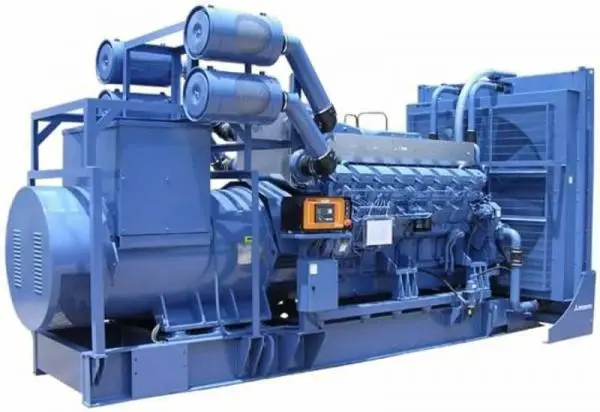Introduction
Diesel generators are a crucial component of many industries and settings where a reliable power source is essential. These generators are known for their durability, efficiency, and ability to provide backup power during outages or in remote locations. One of the key benefits of diesel generators is their capacity for load sharing, which allows multiple generators to work in tandem to meet the power demands of a facility. In this article, we will explore the concept of load sharing with diesel generators, its advantages, challenges, and best practices for maximizing efficiency.
Understanding 500kw diesel generator for telecommunications Sharing with Diesel Generators
Load sharing refers to the distribution of electrical load among multiple generators to ensure balanced power supply and prevent overloading. In the context of diesel generators, load sharing is essential for maintaining stable power output, improving system reliability, and optimizing fuel efficiency. By synchronizing multiple generators and sharing the load based on real-time demand, operators can ensure continuous power supply without overwhelming any single unit.
The principle of load sharing with diesel generators involves connecting the generators in parallel to a common busbar or electrical system. Each generator is equipped with a controller that monitors the load and adjusts the output accordingly to maintain a balanced distribution of power. In a typical load sharing setup, the generators are programmed to respond to changes in load demand and automatically adjust their output to meet the required power levels.
Advantages of Load Sharing with Diesel Generators
There are several advantages to implementing load sharing with diesel generators in industrial, commercial, and residential settings. Some of the key benefits include:
1. Enhanced Reliability: By distributing the load among multiple generators, load sharing reduces the risk of a single point of failure leading to a complete power outage. If one generator fails or requires maintenance, the remaining units can seamlessly pick up the load, ensuring continuous power supply.
2. Improved Efficiency: Load sharing allows operators to optimize the performance of each generator by running them at their most efficient operating points. By sharing the load based on real-time demand, operators can prevent underloading or overloading of individual units, leading to better fuel efficiency and reduced maintenance costs.
3. Scalability: Load sharing with diesel generators offers scalability for facilities with fluctuating power demands. Additional generators can be easily added to the system to accommodate increased loads or provide redundancy, ensuring that the power supply remains reliable and uninterrupted.
4. Cost Savings: By maximizing the efficiency of each generator and preventing overloading, load sharing can help reduce fuel consumption and maintenance costs. The ability to scale the system based on demand also allows operators to optimize their investment in backup power solutions.
Challenges of Load Sharing with Diesel Generators
While load sharing with diesel generators offers numerous benefits, there are also challenges and considerations that operators need to address to ensure effective implementation. Some of the key challenges include:
1. Synchronization Issues: Ensuring proper synchronization among multiple generators is essential for load sharing to function effectively. Variations in frequency, voltage, and phase angle can lead to instability, voltage fluctuations, and potential damage to equipment. Operators must carefully calibrate and synchronize the generators to maintain a balanced power supply.
2. Control System Complexity: Managing the control systems of multiple generators in a load sharing setup can be complex and requires advanced monitoring and automation capabilities. Operators need to have a thorough understanding of the control logic and programming to ensure seamless operation and prevent potential issues.
3. Maintenance and Monitoring: Regular maintenance and monitoring of each generator are crucial for optimal performance in a load sharing system. Operators must conduct routine inspections, testing, and servicing to identify and address any issues that may impact the reliability and efficiency of the generators.
Best Practices for Maximizing Efficiency
To maximize the efficiency of load sharing with diesel generators, operators should follow best practices and guidelines that help ensure reliable operation and optimal performance. Some of the key best practices include:
1. Proper Synchronization: Invest in high-quality synchronization equipment and ensure that all generators are synchronized accurately to maintain a balanced load distribution. Regularly monitor and adjust the synchronization settings to prevent issues related to frequency, voltage, and phase angle variations.
2. Load Balancing: Monitor the load distribution among the generators and adjust the output based on real-time demand to prevent overloading or underloading. Implement load shedding strategies to prioritize critical loads and maintain system stability during peak demand periods.
3. Remote Monitoring and Control: Utilize advanced monitoring and control systems that allow operators to remotely monitor the performance of each generator, track load distribution, and respond to alarms or anomalies in real time. Implement automated controls to optimize the operation of the generators and ensure seamless load sharing.
4. Regular Maintenance: Establish a comprehensive maintenance schedule for each generator, including routine inspections, testing, and servicing to identify and address potential issues early. Keep detailed records of maintenance activities and performance data to track the health of the generators and optimize their efficiency.
5. Training and Education: Provide training for operators and maintenance personnel to ensure they have the necessary skills and knowledge to operate and maintain the load sharing system effectively. Stay informed about industry best practices, regulations, and technological advancements to continuously improve the efficiency of the generators.
Conclusion
Load sharing with diesel generators offers a reliable and efficient solution for meeting power demands in various settings. By synchronizing multiple generators and distributing the load based on real-time demand, operators can ensure continuous power supply, enhance system reliability, and optimize fuel efficiency. While there are challenges associated with load sharing, following best practices and guidelines can help operators maximize the efficiency of the generators and ensure seamless operation. With proper synchronization, load balancing, remote monitoring, regular maintenance, and ongoing training, operators can harness the full potential of diesel generators for load sharing and achieve a reliable and cost-effective power solution.

